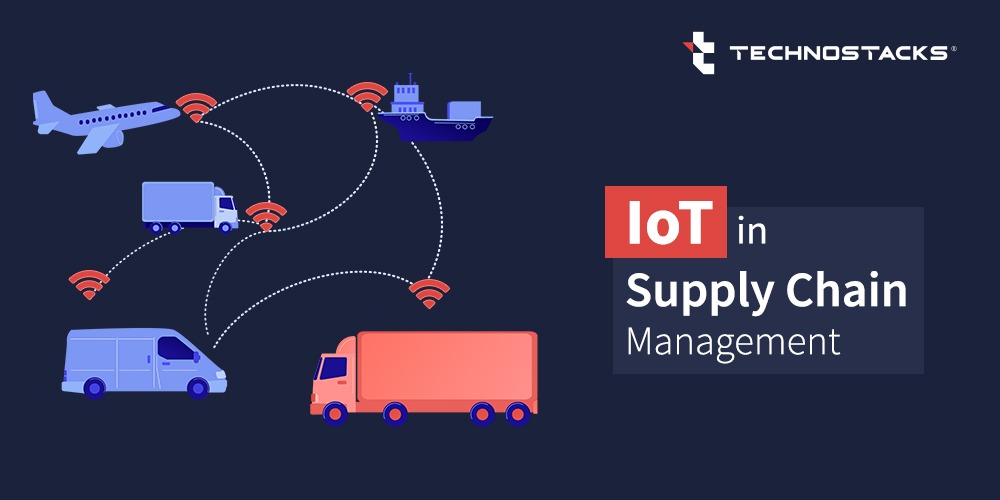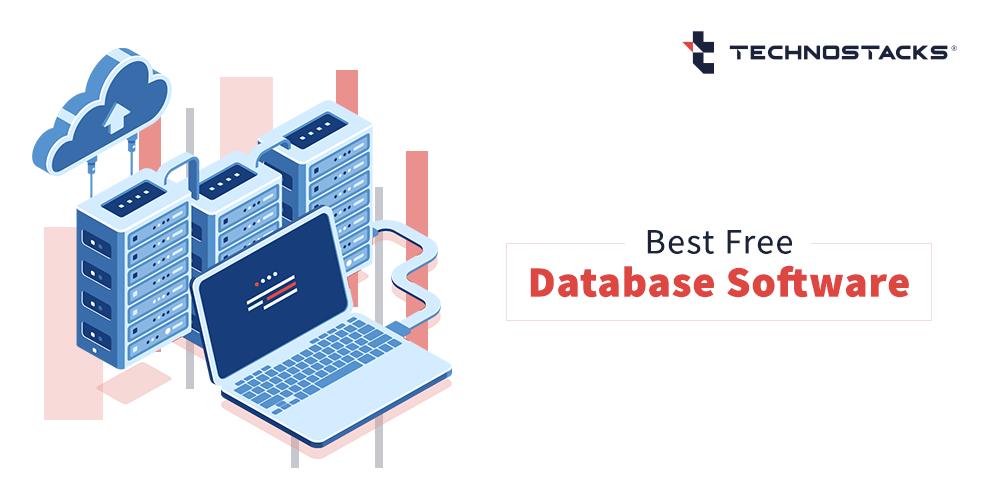How Is the Internet of Things Transforming Supply Chain Management?
The Internet of Things (IoT) is a precise network of interconnected material contents that can gather, transmit, and interchange information. Internet or Wi-Fi servers are generally used to link IoT devices to personal computers.
Monitors in IoT devices help in tracking particular characteristics of the universe surrounding them, such as geolocation, temperature, moisture, lighting conditions, motion, handling, speed of movement, as well as other external conditions. RFID chips, electronic gadgets, and portable sensors are just a few examples of IoT devices.
The Internet of Things (IoT) technology is a truly game-changing innovation for any significant business today, including retail, commuting, banking, medical, and power sectors. In operations such as supply chain, the IoT demonstrates its total and comprehensive capacity.
Read more:- Significant Benefits of IoT for Business
Business owners can now use monitoring, prediction, and supervision tools enabled by IoT to enhance their daily operations, distribution effectiveness and provide flexibility in involved supply chain management processes.
What are the Benefits of IoT Application Development?
The Internet of Things industry is massive and certainly has a loT to provide for several other sectors. It appears that IoT devices will eventually be found in sophisticated towns and rural fields, as well as large production lines, residential areas, and automobile domains. IoT app development tools have become increasingly common; however, finding skilled IoT designers may be difficult.
How Is the Internet of Things Transforming Supply Chain Management?
IoT devices have significantly changed the way supply chains are managed. It is now much simpler to figure out where products are, how they are housed, and when they will reach a particular spot.
- At any moment, you may verify the whereabouts of itemsIoT devices can be connected to individual storage facilities, unprocessed materials, and finished goods. These linked devices will send their whereabouts to the GPS module that could be employed to monitor the position of items and reduce flaws in the supply chain.
- Track when goods arriveFollowing the pace of transportation and the overall stream of items makes predicting how commodities will proceed via the supply chain considerably smoother. As a result, distributors, producers, and distribution hubs may arrange to collect things, reduce operating periods, and ensure item processing efficiency with the enablement of IoT.
- Checking the storage statusManagement can watch shipping settings and react to alterations promptly owing to environment detectors. For example, among the most prevalent IoT supply chain systems, collect information on the heat within automobiles, altitude, humidity, and other variables that might affect the item’s quality and activate automated condition correction.
- Identify the products inside the warehouseAmong some of the significant warehouse technological advancements is the incorporation of IoT-based supply chain management systems. The advantages are many, ranging from improved warehouse operational optimization to enhanced inventory administration along with better staff security.For example, staff can discover items and get to the correct department for a specific item due to real-time GPS sensors. In this scenario, the Internet of Things provides smooth efficiency and productivity that would otherwise be difficult to accomplish. Furthermore, when coupled with AI, IoT represents a milestone towards full-fledged warehouse computerization with hardly any human oversight.
The Advantages of IoT in the Supply Chain
With the IoT technology getting successful, more organizations are looking to enjoy the benefits of IoT in the supply chain. If you’re curious how IoT may boost your business’s productivity and lower overhead expenses, here’s a rundown of its perks and reasons for using IoT in SCM –
- Increased speedAdvanced route-planning applications and IoT surveillance systems significantly enhance total supply chain performance. By incorporating these solutions into regular tasks, administrators reduce the feedback cycle, profit from speedier decision-making, effectively eliminate delayed hazards and enhance overall work productivity.
- Greater precisionLinked networks are quicker and simpler to use than complex systems. By using a cloud-based IoT solution, businesses guarantee that all stakeholders engaged in the supply chain loop get accessibility to important analytics and solve problems quickly.Furthermore, mobile applications for various users (workers, supervisors, carriers, and consumers) assist them in working with the knowledge, using gathered information to determine plans and varied situations appropriate to client requirements.
- Enhanced adaptabilityIoT offers administrators precise information into goods movement, assisting merchants and supply chain partners in determining how many sets of each item to purchase. The Internet of Things also lowers the effects of personal mistakes by providing extreme accuracy in asset monitoring, shipment, and guidance for on-the-road vehicles.
- Improved segmentationIoT in supply chain management allows merchants further to understand their goods, consumers, and needs, allowing them to develop more suitable strategies.In addition, data gathered all through the item line aids in adequately understanding the marketplace and segmenting items with a precise objective.
- Enhanced efficiencyIoT enables a variety of linked systems aimed towards workers. Smart glasses, for example, assist warehouse employees in smoothly instructing them to guarantee they invest less effort performing a job.In addition, IoT collects efficiency-related information and raises knowledge about asset and labor allocation. Supply chain administrators will ensure that all stakeholders engaged in the supply execute to the fullest potential due to advances in technology.
IoT Applications Used in Retailing, Manufacturing and Industrial Supply Chains
- Retail companies may employ IoT-enabled webcams to detect flaws in their goods and reduce them.
- Manufacturers may benefit from “just-in-time” production by planning to create items as soon as it arrives.
- Pharmaceutical producers can keep raw resources secure by tracking them and raising an alert if they reach dangerous temperatures.
- Food companies may keep an eye on the moisture and temperature of items in warehousing to make sure products arrive in excellent shape.
- Retailers can follow items as they travel to delivery locations with the use of specialized logistics vehicles.
- Farmers can use IoT sensors to measure moisture levels and determine the best time to sow or produce.
The Application of IoT in the Supply Chain in Various Industry Areas
Supply chain management is a broad discipline with many facets. All through the distribution, lots of activities co-occur, so management must simplify them. The Internet of Things is the innovation that aids in developing significant perspectives and the development of complicated but effective structures for production excellence in this sector.
So, this is how tech affects different areas of supply chain management, including communications, logistics, warehousing, and shipment.
- Resource administrationIoT solutions make asset inspection and control easier. Administrators may now entirely rely on technology to maintain the position of all resources rather than personally entering the information or using conventional inventory equipment.Comparable to asset monitoring in sales, linked technology like sensors, RFID tags, lighthouses, and advanced technologies enable supply chain managers to trace every product quickly and have swift access to crucial information upon every shipment, like the items of the box and maintenance instructions.
- Enhancements in resource administrationThe essential advantage of IoT in the Supply chain stems from artificial intelligence and technology’s capacity to discover challenges that humans will not be likely to spot. With IoT, you can identify asset breaches, find errors, predict probable system failures, and even glimpse into the future.Indeed, linked systems collect data required for forecasting at many phases of the supply chain, such as identifying equipment malfunction, predicting repair, planning load, and so on.Forecasting and analytics are extensively employed in several sectors – this is the next critical hit in supply chain management. Being competent to predict malfunctions enable supply chain or warehouse administrators to considerably reduce interruption, sparing a considerable amount of money.
- TransparencyThe Internet of Things enhances interaction effectiveness among all stakeholders engaged in the supply chain. Administrators may watch transporters and shippers to check whether they follow internal regulations, if products are maintained correctly and whether there are any gaps between the facility and the consumer’s doorway.Administrators may connect with end customers and keep people updated with real-time location, production, and climate conditions, resulting in improved, more customized assistance.
- SustainabilityIoT has become a sustainability enhancer and part of the innovations that can guide companies in complying with existing sustainability standards and pollution restrictions in a connected supply chain.They can obtain an accurate representation of how assets like water and power are utilized, adopt sustainable methods to fleet administration and shipment. It further incorporates sustainable efforts at mass due to various IoT sensors for supply chain management and asset monitoring.
The Supply Chain Barriers of Implementing the Internet of Things
A strong network connection is required for IoT devices to operate optimally. Many IoT devices can demand Wi-Fi, Bluetooth, or any other link to send their locations to GPS modules. However, they won’t work as well in areas where there are many electric or radio waves disturbances.
IoT sensors must also be correctly set up and connected. Only qualified individuals must operate, install, or uninstall them. Also, it’s critical to select the ideal IoT gadget for the work, as it may quickly be destroyed if not utilized properly.
Instances and Successes of IoT in the Supply Chain
International brands are pushing the Internet of the Things supply chain to new heights. Below are a couple of instances of how big businesses profit from IoT regularly:
- AmazonAmazon is a leader in the use of IoT in the Supply chain. The firm began integrating fleets of linked robotics for warehouse operations in 2012. Automatic tech’s primary function is to detect items by scanning a QR code on packages. Amazon makes the most of its human workers in the warehouses by adopting IoT, enabling employees to concentrate on packaging, wrapping, and stock monitoring.
- VolvoTo track the supply of vehicle elements from several nations, the firm uses a linked cloud-based technology. Volvo tracks automobile deliveries to its global vendors utilizing the Internet of Things.
- NissanFor linking multiple industrial units, the car-maker uses IoT technology. For example, at its facility in Sunderland, UK, the firm has deployed a sophisticated supply chain management system enabled by IoT.
Key Takeaways
Now you know the impact of IoT on supply chain management and its benefits in various ways. In supply chain management, IoT offers several advanced IoT devices and simplifies surveillance. It is involved in the tracing of products, improves scheduling accuracy, and enhances interaction clarity.
Small and big organizations alike may benefit from an IoT-based system, as provided they have a specific goal in mind for what they want the device to do for them.
It is also critical to bring on a talented team for the product development phase. Contact a creative crew of an IoT app development company to ensure that your IoT system for the supply chain matches contemporary emerging technologies and is completely functioning.








